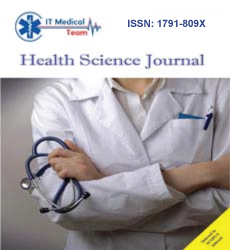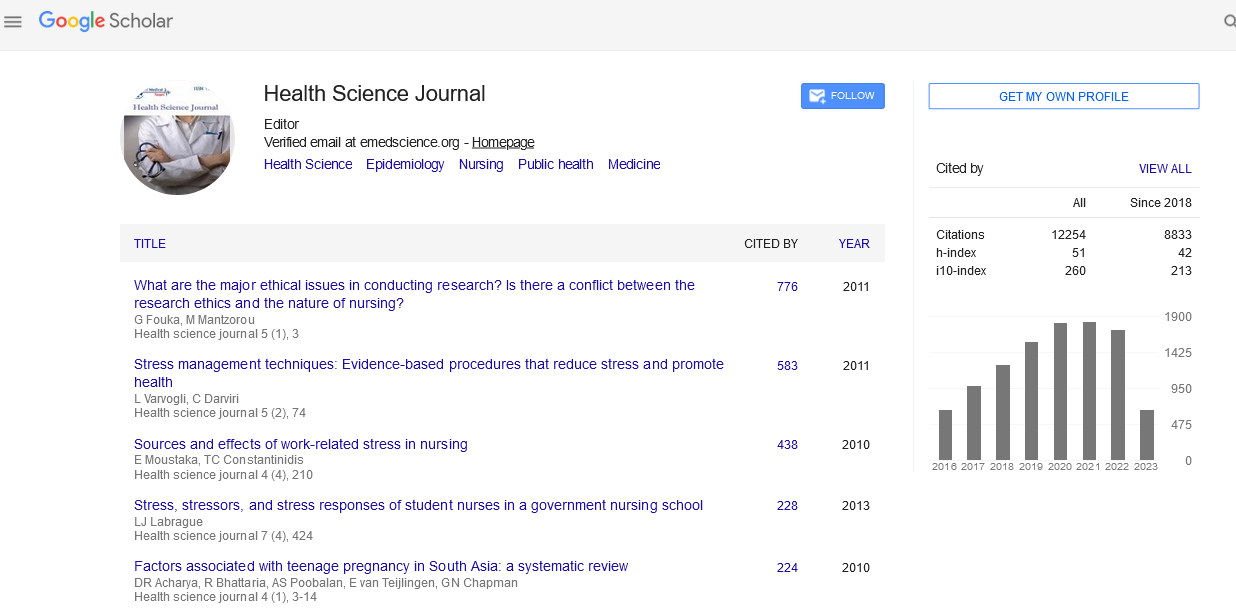Editorial - (2025) Volume 19, Issue 3
Cancer Pathogenesis Diagnosis and Emerging Therapeutic Strategies
Jimmy Dock*
Department of Cancer, Texas University, USA
*Correspondence:
Jimmy Dock, Department of Cancer, Texas University,
USA,
Email:
Received: 01-Feb-2025, Manuscript No. Iphsj-25-15669;
Editor assigned: 04-Feb-2025, Pre QC No. Iphsj-25-15669 (PQ);
Reviewed: 17-Feb-2025, QC No. Iphsj-25-15669;
Revised: 29-Mar-2025, Manuscript No. Iphsj-25-15669 (R);
Published:
31-Mar-2025
Abstract
Cancer remains a leading cause of morbidity and mortality globally, accounting for millions of deaths annually. This article provides a comprehensive overview of cancer, including its biological basis, risk factors, diagnostic methods, and current therapeutic approaches. Emphasis is placed on recent advances in molecular oncology, immunotherapy, and personalized medicine. Understanding the complex interplay between genetic, epigenetic, and environmental factors is essential to advancing treatment outcomes and reducing the global cancer burden.
Introduction
Cancer is a group of diseases characterized by uncontrolled cell growth and the ability of these cells to invade neighboring tissues and spread to distant organs [1]. It represents a major public health issue, with the World Health Organization reporting approximately 10 million cancer-related deaths in 2020. The heterogeneity of cancer, involving various tissue origins and molecular signatures, presents a formidable challenge in terms of diagnosis and treatment [2]. This paper aims to explore the multifactorial nature of cancer, the progression from normal cells to malignant tumors, and the innovations that are shaping future therapeutic paradigms.
Pathogenesis of Cancer
Cancer arises from the accumulation of mutations in oncogenes, tumor suppressor genes, and DNA repair genes. Mutations may be inherited (germline) or acquired (somatic) and can result in abnormal signaling pathways that promote proliferation, inhibit apoptosis, and enhance angiogenesis. In addition, epigenetic changes—such as DNA methylation and histone modification—can silence tumor suppressor genes without altering DNA sequences. As outlined by Hanahan and Weinberg [3], cancer cells exhibit several hallmark capabilities: sustaining proliferative signaling, evading growth suppressors, resisting cell death, enabling replicative immortality, inducing angiogenesis, and activating invasion and metastasis. More recent hallmarks include immune evasion and deregulated cellular energetics. The tumor microenvironment (TME) includes stromal cells, immune cells, blood vessels, and extracellular matrix. The interactions within this environment can promote tumor growth and contribute to therapy resistance. Understanding the TME has become crucial in developing effective treatment strategies, especially in the context of immunotherapy [4].
Risk Factors and Prevention
Major modifiable risk factors for cancer include tobacco use, poor diet, obesity, physical inactivity, and alcohol consumption. Environmental exposures, such as ultraviolet radiation and carcinogens like asbestos and benzene, also increase cancer risk. Certain inherited genetic mutations significantly raise cancer risk. For instance, BRCA1 and BRCA2 mutations are strongly associated with breast and ovarian cancers. Genetic screening and counseling can help identify at-risk individuals for early intervention. Infectious agents such as human papillomavirus (HPV), hepatitis B and C viruses, and Helicobacter pylori are linked to various cancers. Vaccination and antimicrobial therapies offer preventive strategies against these infection-associated malignancies [5].
Diagnosis and Staging
Cancer diagnosis typically involves a combination of imaging (e.g., MRI, CT scans, PET), laboratory tests (e.g., tumor markers), and histopathological examination. Recent advances include liquid biopsies, which detect circulating tumor DNA (ctDNA) and other biomarkers from blood samples. Cancer staging describes the extent of disease spread, commonly using the TNM (Tumor, Node, Metastasis) system. Grading assesses how much tumor cells differ from normal cells, indicating aggressiveness. Accurate staging and grading are vital for prognosis and treatment planning.
Treatment Modalities
Traditional cancer treatments include surgical resection, radiation therapy, and cytotoxic chemotherapy. These approaches remain effective, especially in early-stage cancers, but are often limited by toxicity and non-specificity. Targeted therapies disrupt specific molecular pathways involved in cancer progression. Examples include tyrosine kinase inhibitors (e.g., imatinib) and monoclonal antibodies (e.g., trastuzumab). They offer improved efficacy and reduced side effects compared to traditional chemotherapy. Immunotherapy harnesses the immune system to fight cancer. Immune checkpoint inhibitors (e.g., anti-PD-1/PD-L1, anti-CTLA-4), CAR-T cell therapy, and cancer vaccines have shown remarkable success, particularly in melanoma, lung cancer, and certain hematologic malignancies. Genomic profiling enables tailored treatment plans based on the unique molecular characteristics of an individual's tumor. This precision medicine approach maximizes treatment efficacy while minimizing unnecessary toxicity.
Emerging Trends and Future Directions
AI is being integrated into cancer care for diagnostic imaging, treatment planning, and drug discovery. Machine learning algorithms can analyze large datasets to identify patterns and optimize clinical decision-making. Liquid biopsy is an evolving non-invasive tool for early cancer detection, monitoring minimal residual disease, and evaluating treatment response. As the technology matures, it may become standard in cancer screening programs. CRISPR-Cas9 and other gene-editing tools hold potential for correcting cancer-causing mutations or enhancing immune cell function. While still experimental, these technologies may revolutionize cancer therapy in the future.
Conclusion
Cancer is a complex and multifaceted disease requiring a multidisciplinary approach for effective management. Continued advances in molecular biology, immunology, and computational technologies are transforming cancer diagnosis and therapy. As precision medicine becomes more widespread, individualized treatment strategies promise to improve patient outcomes and reduce the global cancer burden.
References
- Krishan K, Kanchan T, Thakur S A study of morphological variations of the human ear for its applications in personal identification.
Indexed at, Crossref
- Kyriakou G, Glentis A, Papanikolaou S (2021) Widow’s peak a usually overlooked, yet significant morphogenetic trait. JDDG J German Soc Derma 19: 1271-1275.
Indexed at, Google Scholar, Crossref
- Lane RD, Caruso AC, Brown VL, Axelrod B, Schwartz GE et al. (1994) Effects of non-right-handedness on risk for sudden death associated with coronary artery disease. American J Card 74: 743-747.
Indexed at, Google Scholar, Crossref
- Manning JT, Scutt D, Wilson J, Lewis-Jones DI (1998) the ratio of 2nd to 4th digit length: a predictor of sperm numbers and concentrations of testosterone, luteinizing hormone and oestrogen. Human Reproduction 13: 3000-3004.
Indexed at, Google Scholar, Crossref
- Mu L, Sanders I (2010) Human tongue neuro anatomy: Nerve supply and motor endplates. Clinical Anatomy 23: 777-791.
Google Scholar, Crossref
Citation: Dock J (2025) Cancer Pathogenesis
Diagnosis and Emerging Therapeutic
Strategies. Health Sci J. Vol. 19 No. 2: 1229.





